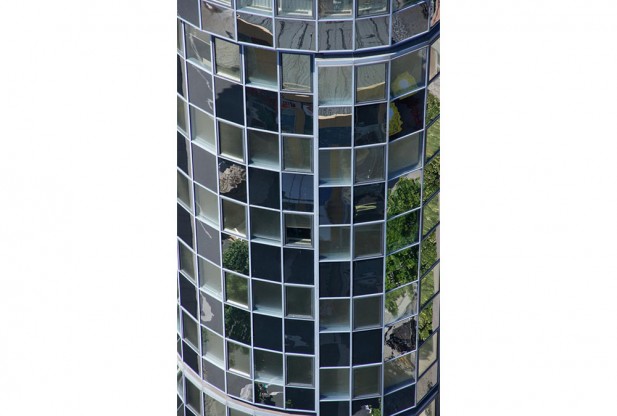Saturday, 20/04/2024 | 14:54 GMT+7
The building of the future could feature windows capable of changing the amount of light they let through at the push of a button and facades that can alter their color based on the amount of sunlight at any given time, researchers from Friedrich Schiller University claim.
In addition, the university’s Large-Area Fluidic Windows (LaWin) project, materials scientist Lothar Wondraczek and his colleagues are looking to design structures featuring facades and window parts that have been integrated with transparent photovoltaic modules, or in which microalgae are being bred to provide the home or office with its own source of biofuel.
“Many of these ideas are certainly within imagination end even technological feasibility, today, in particular within the field of façades which may adapt to their environment and thus improve the energy efficiency of modern buildings,” Wondraczek explained in a statement. “But only a fraction of this potential has been tackled so far, as the relevant materials and production processes are still missing.”

Wondraczek and an international team of architects, materials researchers and engineers are looking to solve these problems through the LaWin project. Their goal is to develop functional building fronts and window modules. He and his colleagues are currently working on new glass modules that will consist of two joint glass layers, one built from a very thin and high strength cover glass and another constructed from structured glass.
“This structured glass contains microfluidic channels through which a functional fluid circulates. As an example, this liquid will make it possible to automatically adjust the incidence of light or to harvest exterior heat which will then be transported to a heat pump,” he said.
They plan to put the facade and window modules through a battery of tests in order to optimize the materials they use and make sure that they function in the most efficient way possible. The plan is to implement their designs with reference buildings in order to test them in real world conditions and see how well they operate.
“The challenge lies in the large size,” Wondraczek noted. “As of today, there is no production process for such large-sized glass sheet with integrated micro structures. Moreover, the new glass facades have to be able to be integrated into conventional window and facade systems.”
In addition, they will have to be cost-effective to use, since a reported one-third of all greenhouse gas emissions and 40 percent of energy consumption throughout the European Union are the result of the heating, cooling, lighting and air conditioning of buildings. He and his colleagues hope to make buildings more energy efficient while also significantly reducing CO2 emissions.
A total of 14 institutions are participating in the LaWin project, including Friedrich Schiller University, Weimar University, Beuth University of Applied Sciences and 11 private-sector firms from Germany, Austria, Belgium and the Czech Republic. The research is being funded by the European Commission as part of its Public-Private-Partnership (PPP) Initiative to support research to enhance the sustainability of European industrial leaders and innovators.
Redorbit








.jpg?w=367&h=206&mode=crop) Energy efficiency and conservation usage is an important aspect of the national energy development strategy
Energy efficiency and conservation usage is an important aspect of the national energy development strategy
 Challenges and Opportunities to promote energy efficiency market in Vietnam
Challenges and Opportunities to promote energy efficiency market in Vietnam
 The Ministry of Industry and Trade requests government agencies to coordinate in organizing Earth Hour 2024
The Ministry of Industry and Trade requests government agencies to coordinate in organizing Earth Hour 2024
 Consultation on Energy Efficiency Boiler Catalogue and Wood Drying Guideline
Consultation on Energy Efficiency Boiler Catalogue and Wood Drying Guideline
 Son Ha Co., Ltd, applies energy efficiency and conservation measures
Son Ha Co., Ltd, applies energy efficiency and conservation measures
 Phuc Kien Co., Ltd., is effectively implementing energy-saving measures
Phuc Kien Co., Ltd., is effectively implementing energy-saving measures
.png?w=367&h=206&mode=crop) Request for expression of interest - C2.1.13: Capacity Building on energy efficiency policies development
Request for expression of interest - C2.1.13: Capacity Building on energy efficiency policies development